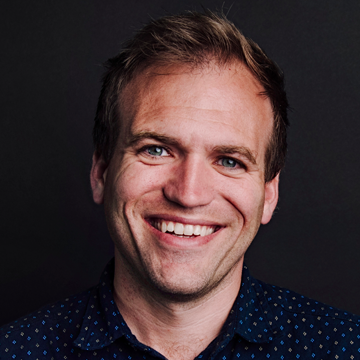People gather to eat Iftar, the meal to end their fast at sunset, on the last day in the holy fasting month of Ramadan, at food court area in Cairo Festival City Mall, Egypt May 12, 2021.
People gather to eat Iftar, the meal to end their fast at sunset, on the last day in the holy fasting month of Ramadan, at food court area in Cairo Festival City Mall, Egypt May 12, 2021.
Looking back on Ramadan, it is clear that the “interfaith iftar” has become a common experience in many large cities around the world. These events see Muslims invite adherents of other faiths, especially from the Abrahamic family, to join them to break the daily fast in their home, mosque or community center during the holy month. While they might appear to be a new trend, they are actually almost as old as Islam itself. A careful reading of history shows us that the most brilliant periods of Islamic history were when the followers of the Abrahamic religions lived as neighbors, studied together and shared life’s joys and sorrows.
Take, for example, the famed 8th/9th-century Abbasid caliph Al-Mamun. Every Tuesday, he welcomed Muslim, Christian, Jewish and Manichaeistic clergy to his court in Baghdad to engage in a weekly interfaith dialogue. Stories are also told of Al-Mamun, on a visit to Raqqa, joining Christians in their sanctuaries for the Palm Sunday celebrations. The case of Al-Mamun shows that he did not see a threat in the coexistence of the two faiths; on the contrary, it enriched his life and those of his subjects, and the many books on theology and philosophy from that period attest to that.
His example carried on long after him, as historians wrote of an auspicious occasion in 9th-century Baghdad when Eid fell on the same day as both Palm Sunday and the Jewish Passover. The city’s streets were filled in joint worship of God from Jews, Christians and Muslims.
The seriousness of the scholarship in the Abbasid era is considered by modern academics as the reason why much Greek learning survived the European Dark Ages. Few, however, know that this scholarship has its origins in Muslim-Christian coexistence. It was normal for Muslims to learn from Christian scholars and for Christians to learn from Muslim scholars. The renowned Muslim philosopher Abu Nasr Al-Farabi (known as Alpharabius) had among his teachers the Nestorian Christian scholar Yuhanna bin Haylan. Similarly, one famous 13th-century Islamic scholar was especially famous for teaching the Bible to his Christian students in Mosul.
Christians were not only encouraged to translate Greek texts, but they also took an active part in public administration. Abbasid Caliph Al-Mutasim (ruled 833-842) entrusted a Christian vizier, Fadl ibn Marwan ibn Masarjis, with the affairs of state and, during the reign of Al-Muqtadir (908-932), Christians served as treasurers and even commanders of the army.
Islamic history is filled with many examples of coexistence among the Abrahamic communities and this is no surprise given the nature of Islam’s early encounters with Christianity. In the year 631, a traveling group of Christians from Najran (in southwestern Saudi Arabia) arrived with their bishop in Madinah, the seat of the early Muslim state. They found there a welcoming hand extended from the Prophet Muhammad, who provided them with shelter and accommodation in the main mosque and allowed them to pray there too.
Islamic history is filled with many examples of coexistence among the Abrahamic communities.
Johnnie Moore & Saud Al-Sarhan
Events like this were not rare. There is much literature about early Muslims participating in Christian and Jewish funerals. Historians recorded an incident when the funeral of a Jew passed by the Prophet one afternoon. The Prophet immediately stood in respect. The accompanying Jews no doubt understood the message, as Judaism teaches that one of the highest acts of loving kindness (what Jews call “chesed”) is paying respect to those mourning the loss of a loved one.
History is not just filled with examples of Muslims showing kindness to Christians, but also of Christians showing kindness to Muslims. When Muslims arrived in Damascus in 634, they found the city’s Christians willing to provide space in the Mariamite Cathedral for them to pray. In fact, Christians and Muslims shared the same cathedral for the next 70 years. Writing several centuries later, in the late 12th century, the Muslim traveler Ibn Jubayr wrote of Lebanon’s Christians bringing food to Muslim hermits, who they referred to as people who were “dedicated to a great and glorious God.” There are many examples of Christians, Jews and Muslims sharing their lives, worshipping alongside one another, and showing respect to each other’s communities — all without fear, enmity or compulsion. This spirit of coexistence is drawn from beliefs shared by each of the Abrahamic faiths: We are all children of God, made in his image, and therefore united by our common humanity.
This same spirit was put into words in the Charter of Makkah of 2019. This historic document, drafted by Muslim clerics and championed by King Salman, began by declaring that “all people, regardless of their different ethnicities, races and nationalities, are equal under God.” It rejected “religious and ethnic claims of ‘preference,'” and stated that “differences among people in their beliefs, cultures and natures are part of God’s will and wisdom.” The charter was unanimously endorsed by an unprecedented group of more than 5,000 Muslim clerics and scholars brought to Makkah for the occasion.
Believers, confident in their faith, have nothing to fear from their neighbors. In fact, we have so much to gain by learning from one another. Fear and distrust should no longer be a barrier.
• Johnnie Moore is president of the Congress of Christian Leaders and founder of The KAIROS Company.
• Saud Al-Sarhan is Secretary-General of the King Faisal Center for Research and Islamic Studies in Riyadh, Saudi Arabia.
Disclaimer: Views expressed by writers in this section are their own and do not necessarily reflect Arab News’ point-of-view
